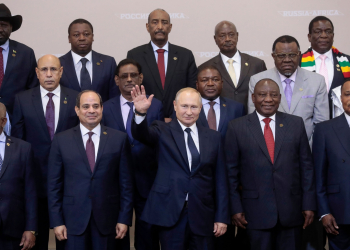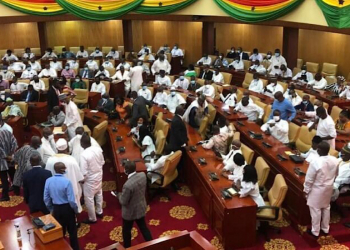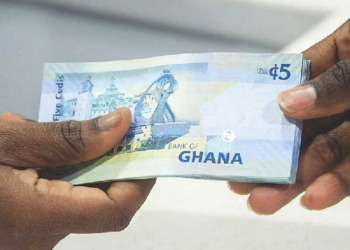The contending schools of thought hold an opinion that it was the founders of the NDC Party who created boisterous brats and vigilantism.
It has been well-stencilled that in a desperate attempt to hold on to their illegitimate power, the founders of the NDC Party set up paramilitary organs such as People’s Defence Committee (PDC), the Civil Defence Organisation (CDO), which was popularly known as the Militia, and the Workers Defence Committee (WDC), where the last two organs were later reorganised and renamed as the Committee for the Defence of the Revolution (CDR), whose collective mandate was to defend the revolution by hook or by crook.
“The PDCs and the WDCs (Workers Defence Committees) had their own courts and “meted out justice according to no established legal procedures” [Amnesty International, 1983).
Apparently, some of us who were old and fortunate enough to witness the memorable events which took place over a period of three decades (1970-1990s), cannot be hoodwinked and proselytised by the supposedly exponents of probity, transparency and accountability.
Generally, I detest coup makers, but General I. K. Acheampong (The Head of State from 1972-78) was an exception to my odiousness. I had a great deal of respect for the man, primarily because of his great sense of foresight.
In my humble opinion, General I. K. Acheampong was an estimable leader who initiated pragmatic policies such as operation feed yourself and affordable housing.
Of course, General Acheampong was a visionary leader compared to other coup makers. Nonetheless, some of us cannot forgive him for deposing a democratically elected government.
If we stroll down memory lane, General I. K. Acheampong led a group of disgruntled soldiers and usurped Prime Minister Dr Kofi Abrefa Busia’s government in 1972.
The mutinous coup makers adopted a taxonomic nomenclature for their government-The Supreme Military Council (SMC).
In 1978, General Acheampong was accused of economic mismanagement and consequently, forced to resign by a group of army officers led by General Akufo.
General Akufo and his rabble rousers renamed the government as the Supreme Military Council 2 (SMC2).
It is, however, worth emphasising that the harsh living conditions at the time prompted a group of patriotic citizens to stand up against the injustices and demanded a democratic rule.
But before the country could reach a consensus on the question of civilian rule, a group of disgruntled junior army officers led by Flight Lieutenant Jerry John Rawlings revolted against General Fred Akuffo’s SMC2 regime on 15th May 1979.
However, the cabals failed in their insurrection, which culminated in the arrest and trial of Rawlings and his cohorts.
All the same, the judicial process was halted prematurely by a group of soldiers sympathetic to Rawlings, who revolted on 4th June 1979.
The rebellious soldiers (mobsters) broke jail and released Rawlings and his cohorts from a lawful custody.
After successfully deposing General Akuffo and his Supreme Military Council2 (SMC2) government, the stubbornly impenitent jailbreakers went ahead and formed their own government, which they called as the Armed Forces Revolutionary Council (AFRC) and appointed Flt. Rawlings as their chairman.
Rawlings and his friends vowed to purge off the rampant sleazes, corruptions and social injustices which instigated their coup d’état.
So in their attempt to lustrate the country of the perceived injustices, they carried out what they termed “house cleaning exercise”,–they dealt with perceived offenders arbitrarily (instant justice was the order of the day).
The mutinous coup makers proceeded with their intentions and callously exterminated eight prominent officers, whom they accused of committing sleazes and corruptions without trial.
The Officers included General Fred Akuffo, General Kutu Acheampong, General Akwasi Afrifa and many others.
If we were to compare the alleged corrupt practices of the executed army generals with the sleazes and corruptions which took place in the erstwhile NDC administration, we cannot help but to conclude that the Generals were “shot for less”.
Apparently, former President Rawlings agrees with the preceding assertion.
Rawlings laments: “I want to remind people that we could not have possibly forgotten that Generals were executed. The greed, corruption and injustice of today is a thousand times more than what these Generals were executed for, and if we are unable to restore a firm measure of integrity into our dealings, then the blood of many would have been shed in vain” (Rawlings 2017).
The coup makers transferred power to Dr Hilla Limann and his PNP Party following the successful election in 1979.
Disappointingly, however, Rawlings and his cohorts did not give Dr Liman and his PNP government the breathing space to govern the country, as they relentlessly breathed down the neck of President Liman.
As a matter of fact, Rawlings and his conspiratorial plotters unfairly kept criticising Dr Limann’s administration for what the coup makers perceived as economic mismanagement, until Rawlings and his jailbreaking geezers decided to depose Dr Limann.
Subsequently, J. J. Rawlings and the other obstreperous jailbreakers took arms and succeeded in deposing the democratically elected government of Dr Hilla Limann on 31st December 1981.
Apparently, Rawlings and his friends formed a government which they called the Provisional national Defence Council (PNDC) and appointed Rawlings as the chairman.
The Formations of the Revolutionary Organs
Below is the U.S. Library of Congress’s interesting compilation of the formations of the PNDC’s paramilitary organs whose primary task was to defend the revolution.
In their attempts to lay the foundation for true democracy in Ghana, the PNDC regime created a controversial countrywide network of People’s Defence Committees (PDCs) and Workers’ Defence Committees (WDCs), reorganised and renamed, in late 1984 as Committees for the Defence of the Revolution (CDRs).
The CDRs were established in villages, urban communities, and workplaces and intended to be the organs of popular power and political initiative.
In addition, Forces’ Defence Committees were established in the armed forces and the police service.
The most important aspect of the reorganization of the PDCs and the WDCs from the standpoint of the political and socioeconomic functions of the CDRs was the opening up of membership to all Ghanaians.
This decision reversed the earlier exclusion from PDC/WDC membership of elite groups, such as chiefs and so-called exploiting classes.
The change returned the revolution to its original objective of involving all Ghanaians in decision making and opened up possibilities for genuine national reconciliation.
According to official directives, the principal functions of the CDRs were to ensure democratic participation in decision making in all communities and workplaces; to guard against corruption, abuse of power, sabotage, and social injustice; and to promote sustained national productivity by focusing efforts on the productive sectors of the economy.
The other mass organizations of the revolution were the National Mobilisation Program, the 31st December Women’s Movement, the Civil Defence Organisation (the militia), the National Youth Organising Commission, and the June Four Movement.
The National Mobilisation Program started as an emergency programme to receive and resettle Ghanaian returnees from Nigeria in 1983. It soon developed into a cooperative movement engaged in a variety of economic and community development projects throughout Ghana. The 31st December Women’s Movement aimed to bring about the political, social, and economic emancipation of Ghanaian women, especially rural women.
The Civil Defence Organisation, popularly known as the militia, was set up as a paramilitary institution to assist other state organizations in national emergencies such as invasions, bush fires, and floods. Members received special training in combat readiness to defend the nation against internal and external aggression and economic sabotage.
The militia, in addition to combating crime in local communities, engaged in voluntary social and economic activities to help promote community development. In this effort, it was often assisted by the National Youth Organising Commission, created in 1982 as part of the PNDC’s efforts to establish a youth movement to carry out the objectives of the 31st December 1981 Revolution.
The June Four Movement was a militant mass revolutionary movement dedicated to keeping alive the ideals of the June 4, 1979, uprising that Rawlings had led. It sought to arouse the population at large to assist in establishing so-called people’s power within the avowed objectives of the revolutionary process.
On a practical level, it worked with the militia and the National Youth Organising Commission in various community development projects.
Participatory opportunities of the ordinary Ghanaian citizen were significantly expanded through membership in revolutionary organs.
Before the establishment of the district assemblies in 1989, the PNDC government was thus able to reach the rural population and to broaden its base of support by direct consultation.
This was achieved through chiefs, the CDRs, and other national bodies such as the Democratic Youth League of Ghana, which in 1988 claimed a nationwide membership of more than 100,000. Other such groups included farmers’ organizations, market women’s associations, trade union groups, students’ organizations, and religious and other bodies.
The PNDC’s political opposition, however, hotly contested the democratic nature of such organs and saw them as nothing but state-sponsored vigilantes engaged in intimidation and human rights abuses (Source: U.S. Library of Congress).
It is, however, being alleged that when Ghana returned to democratic rule, some members of the paramilitary groups who could not get the opportunity to join any of the security services bolted with their guns.
We have unfortunately sat idly over the years and allowed the boisterous homicidal brats and other ill-motive paramilitary groups to cause havoc to innocent Ghanaians.
K. Badu, UK.
References:
Amnesty International (1983), ‘Amnesty International’s Concerns in the Republic of Ghana: An Amnesty International Background Paper. London: AI
U.S. Library of Congress (2017), ‘Ghana: The Revolutionary Organs’, (online). Available: countrystudies.us/Ghana/93.htm
Rawlings, J. J. (2017), ‘June 4 Full Speech, (online). Available: www.starrfmonline.com
Badu, K. (2017), ‘Bongo MP, It Was The NDC That Came Out of Coup d’états’, (online). Available: www.ghanaweb.com
Join GhanaStar.com to receive daily email alerts of breaking news in Ghana. GhanaStar.com is your source for all Ghana News. Get the latest Ghana news, breaking news, sports, politics, entertainment and more about Ghana, Africa and beyond.




